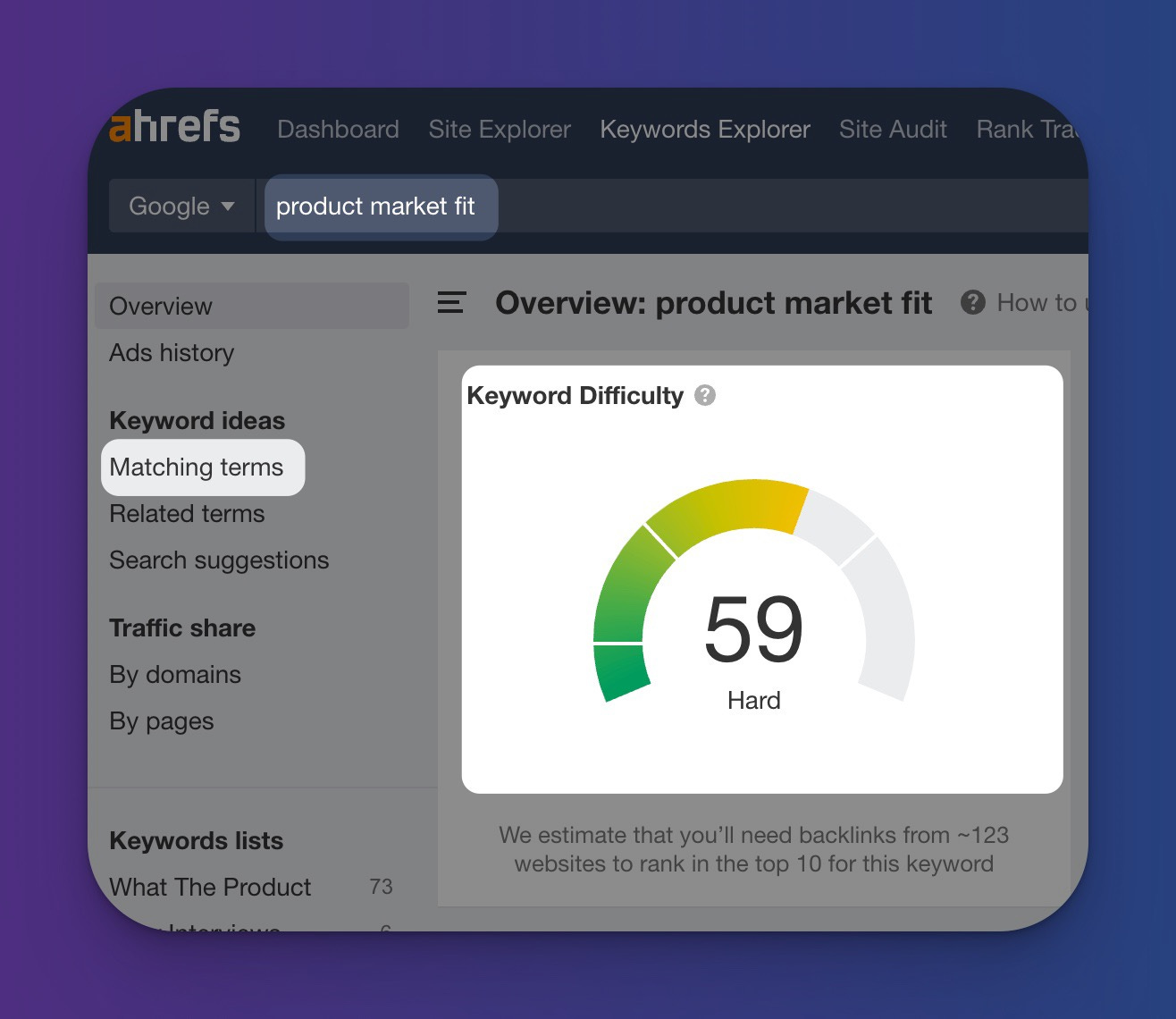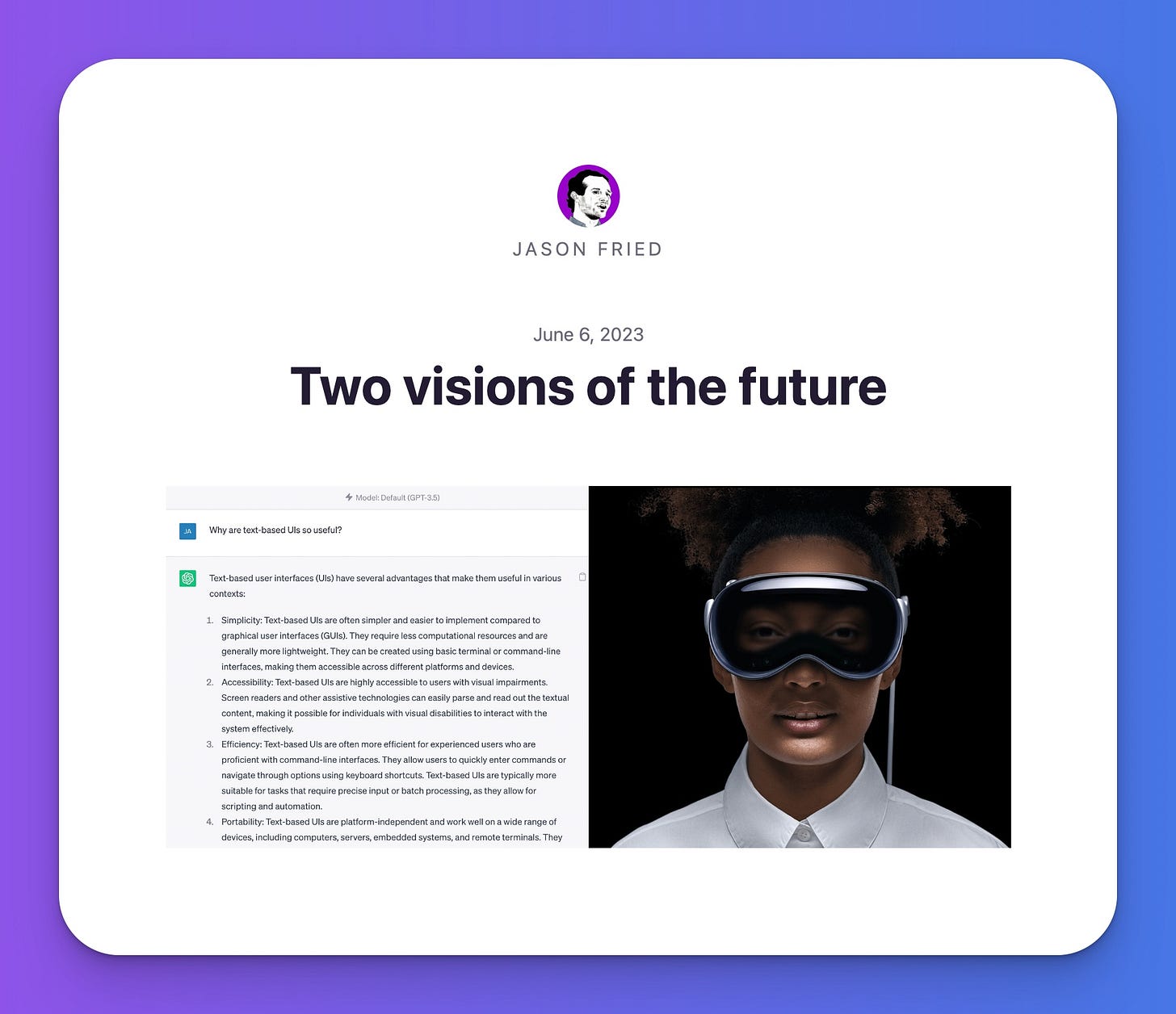How to find great SEO keywords when you are just getting started
If you're just getting started with SEO, got no traffic, this one is for you!
Welcome to this week’s edition of What The Product, where I share actionable insights on building and growing products.
This week I’ve got 6 things to share with you:
Weekly learning: how to find great SEO keywords when you are just getting started
What The Product Update: my b2c bootstrapping guide is out
Actionable insight: 2 ideas to attract first users without an audience
Resource: Swapstack to grow your newsletter
Resource: massive Act as a… prompt database
Reading this week: two visions of the future by Jason Fried
1. Weekly learning
🔑 My crash course in keyword research
Last week I promised you a guide to finding long-tail keywords you can rank for. So here we go!
Since it is a brand-new website it’s got no domain authority (no one is linking back to me, I only have very little content).
The only way to get the ball rolling is to target long-tail keywords that I have a chance to rank for.
I use Ahrefs for keyword exploration. Here’s my process for finding them:
Look for head keywords (obvious, big keywords associated with my target audience). For example “bootstrapping“, “product-market fit“ or “product ideas”. There’s no way I can rank for any of these keywords. So I need to find long-tail keywords associated with these head terms.
Go to Matching Terms – these are all the other keywords people look for and are related to the head term. You’ll get a ton of results. To find the right ones, I filter 3 things:
Keyword Difficulty (how hard is it to rate for a said keyword): low-hanging fruit is 10 and below.
Volume (how many people search for the term each month): again, the low-hanging stuff is 300 or less.
Traffic potential (this filters out keywords that get a lot of traffic from the head term and you’re far less likely to rank for them): again, 300 or less.
Et voilà! I’ve got a few terms with some traffic I can attack:
2. What The Product Update
🥾 I’ve written a B2C bootstrapping guide
Yes, this is a result of my keyword research 🙂
B2C is harder than B2B – this may be an unpopular opinion, but definitely true if you’re a bootstrapped founder going against the marketing budgets of your VC-funded rivals.
But there are plenty of success stories.
I’ve studied them and here’s what they are doing to beat the odds:
Identify a Community: Choose a community you're genuinely interested in and would like to serve.
Become an Active Member: Engage actively in the community to understand its needs, preferences, and challenges.
Conduct Interviews: Interview community members to gain deeper insights into their problems and potential solutions.
Research Acquisition Channels: Investigate potential customer acquisition channels that align with your target audience and budget.
Test Acquisition Channels: Run small-scale marketing campaigns to test the effectiveness of different acquisition channels.
Design a Revenue Model: Develop a sustainable revenue model based on your understanding of the community, their willingness to pay, and the value your product or service provides.
3. Actionable insight
🧲 How to attract users without an audience
2 indie hackers share their best tricks:
Social Listening
Anže from FediDevs recommends:
listen to conversations related to the topic of your product
don’t promote your product, but provide genuine assistance, answer questions, help
Example: people asking for cool accounts to follow
…so I try to find people asking for cool accounts to follow. I reply with links to accounts that might be interesting to them. I don't mention my product right away. If more conversation follows, there might be an opportunity for me to pitch my project more naturally, and get better engagement from it.
Purchase ad space in Twitter threads
This was new for me as well! Savan recommends reaching out to Twitter creators talking about your niche and offering them an ad partnership.
It's worth sending DMs to people on Twitter who cover your industry and appeal to your end user. Just pitch it to them and let them know that you're solving their audience's pain.
3. Resources
Swapstack
I’m testing out this platform to grow my subscribership on this newsletter. It has a few tools for creators:
newsletter recommendations: you can recommend a newsletter and others recommend your newsletter to their readers
sponsorships: a network of advertisers to tap into – no, you won’t see ads here anytime soon 🙂
tip jar: just like Patreon
I’m most interested in the recommendations. I’ll let you know how this performs.
Act As A… ChatGPT prompts
If you need some prompt inspiration, this is a massive list of “Act As a…“ prompts. It’s great to see how others are using ChatGPT and get inspired.
4. What I’ve been reading this week
📗 Two visions of the future by Jason Fried
Text-based UI vs immersive UIs. They may co-exist, but they are very different.
One vision gets the UI out of the way. The other vision is UI everywhere you look.
5. Whenever you are ready
The User Interview Toolkit - helps you ask the right questions to uncover real insights.
The IdeaPad - a Notion system for capturing and ranking product ideas








